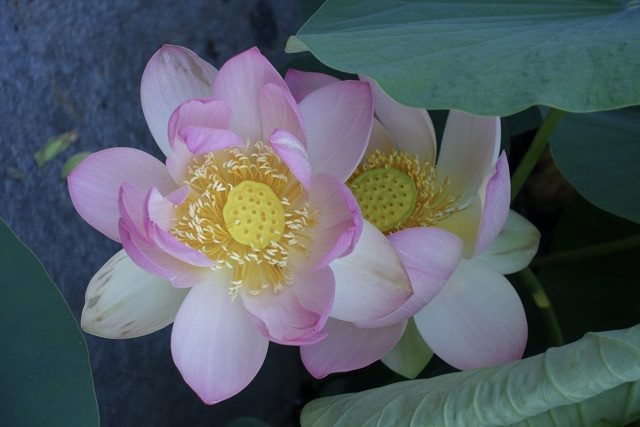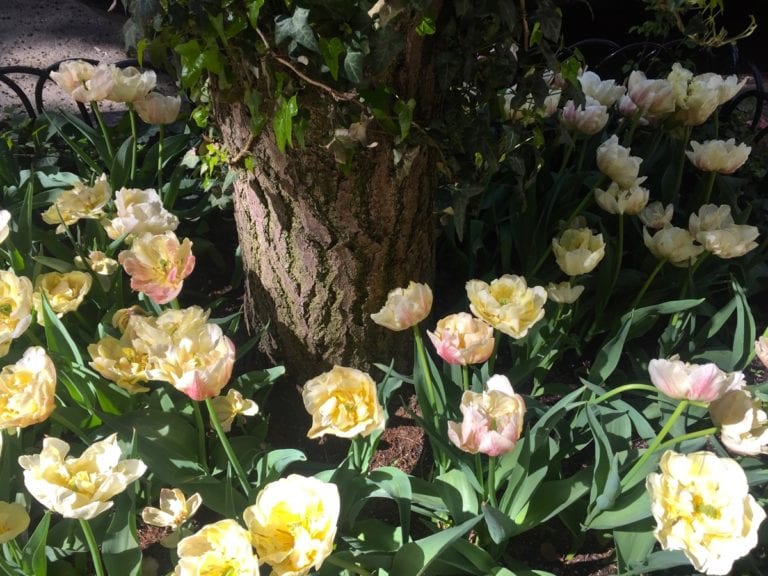Similar Posts

697th Week: Gratitude for Help Along the Way
On my birthday last year, I had an opportunity to offer myself an unexpected gift, one for which I was inordinately grateful. It turned out that, upon awakening the morning of my birthday, it became immediately evident that I urgently needed a root canal. Much to my relief, my endodontist was able to see me at exactly the time my schedule allowed that day, although I would have canceled whatever I had to in order to see him.
As I sat in his chair, the local anesthesia taking effect I was filled with gratitude that this man had gotten training that allowed him to relieve my pain in such skillful and, frankly, easy ways. Read More “697th Week: Gratitude for Help Along the Way”

776th Week: Programming Ourselves for More Gentle Self-Talk
One of the things that always touches me is listening to the critical ways in which so many of us talk to ourselves. It’s as though we culturally tune into a particular channel of self-awareness and are taught to give ourselves a hard time, weighing ourselves down with “shoulds”, comparing ourselves negatively to others, and making sure we jump on ourselves immediately if there is any hint that we might not be measuring up to whatever judgments we may carry.
For many of us, there is also the underlying anxiety, uncertainty, and downright fear that arose during times of trauma when we may have experienced verbal or physical abuse. With abuse tends to come an internal dialogue of self-blame which then grows into an internal litany of what’s wrong with us and why we, or our lives, will never be okay.
Recently, I watched a Tedx Talk by Andrew Newman, the creator of the Conscious Bedtime Story Club and the author of many children’s books. The talk is entitled, “Why the Last 20 Minutes of the Day Matter” and I was captivated by what Andrew had to say. Here’s a link to his talk: https://www.youtube.com/watch?v=sfcZhlK-FAU
Read More “776th Week: Programming Ourselves for More Gentle Self-Talk”
Offering Healing to Our Human Collective: A Guided Meditation
In this guided meditation, we offer healing energy to our distressed human collective. Using the imagery of a “love sandwich”, the light of the earth on the bottom, the density of distressed human collective consciousness in the middle, and higher-frequency energy at the top, we each become a point of light, offering healing frequencies to the dense middle. We are each one of many points of light helping to lessen the density of our collective consciousness so that the light from above and below can more freely flow in to offer the healing available from these larger, more powerful sources.

2024 September Meditation
This month, we continue with radiating love and this time we radiate it to all our earth-kin, calling forth our optimal relationship with them. Sending love to the optimal relationship between our human family and our family of earth-kin, noticing how the heart expands its ability to include all life in its loving presence.
Here’s the audio version of this month’s meditation:
If you would prefer to do the YouTube version with images from nature:

672nd Week: Nurturing Compassion
For this week’s experiment in conscious living, I draw from my book, Sacred Practices for Conscious Living, 2nd Edition, from the chapter on “Compassion and Lovingkindness: Living with An Open Heart”. Here’s a quotation from that chapter:
“For many people, the process of awakening to a greater sense of compassion initially feels overwhelming. A question many ask is, “What can I, one person, do in the face of so much suffering?” The answer is, perhaps surprisingly, quite a lot… Read More “672nd Week: Nurturing Compassion”